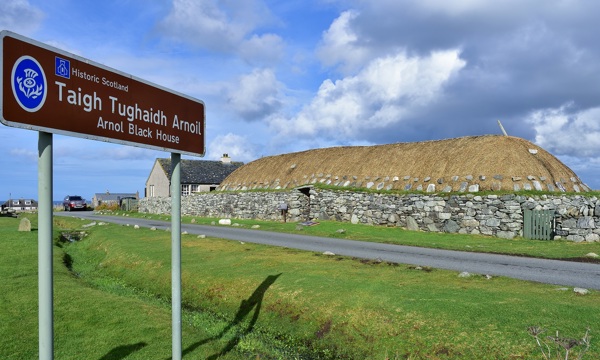Historic Environment Scotland is asking for views on its Gaelic Language Plan 2023-2026 as part of a six-week public consultation which opens today (Wednesday 8 March).
The plan will set out how HES intends to increase the use, learning and promotion of Gaelic and builds on the success of its 2018-2023 plan which was the first Gaelic Language Plan for the organisation.
As part of the plan, HES will continue to support local communities, particularly those with large Gaelic speaking populations and learners, to connect with, celebrate and enjoy their historic environment. More opportunities will be created for communities to use and learn Gaelic from community excavation projects and youth engagement activities to grant funding schemes.
HES will continue to investigate and promote links between its Properties in Care, the historic environment and Scotland’s linguistic heritage to demonstrate the influence of Gaelic culture on Scotland’s history and living heritage through its visitor experiences. This includes expanding HES’s Gaelic Volunteer Programme which launched in 2019. As part of the programme, volunteers at Arnol Blackhouse on the Isle of Lewis developed and delivered bespoke tours for visitors to the historic sites. HES also plans to extend the ways in which people can volunteer with the organisation and increase flexibility in its approach to volunteering, as well as raising awareness of the apprenticeships and placement opportunities available to Gaelic speakers.
In spring 2023, HES will carry out a review of its Gaelic interpretation – including interpretation panels, guidebooks, audio guides, retail products, collections and archives – to further improve Gaelic interpretation practices across the organisation and share the findings with others to inform best practice.
This follows extensive work on HES’s interpretation offering which was carried out as part of the previous plan. This includes the development of bespoke digital interpretation where QR codes linking to Gaelic videos were installed at 24 sites, including Edinburgh Castle, Fort George and Glasgow Cathedral, allowing visitors to find out more about the Gaelic language and culture associated with the site.
Another key focus for the 2023-2026 plan is to help create a sustainable future for Gaelic learning and education by using the historic environment to enrich education through workshops, tours, learning resources, professional learning sessions and digital content. Last year, HES launched its first national Gaelic competition Sgrìobh is Aithris (Write and Recite) to encourage children and young people aged between five and 17-years-old to write stories in Gaelic based on their favourite place in Scotland. An online exhibition was then created to showcase the stories.
HES also hopes that the plan will contribute to Scotland’s net zero target. By creating opportunities and resources that allow for people to learn more about the climate crisis through Gaelic as well as further increase awareness and understanding of Scotland’s biodiversity and landscape, HES hopes to engage more people in the conservation of both the natural and historic environment.
Catriona Morrison, Gaelic Language Policy Manager, said:
This is an ambitious plan which will recognise and celebrate Gaelic’s important and valuable contribution to Scotland’s historic environment.
“We hope to hear from as many people as possible – from Gaelic speakers to those who have an interest in the language or people who would like to learn more about Gaelic language and culture in the future. By sharing your views, your feedback will shape our next Gaelic Language Plan which, in turn, will help us to safeguard and promote Gaelic language and culture to national and international audiences.”
The Gaelic Language Plan 2023-2026 consultation closes on Wednesday 19 April.
Take part in the consultationAbout Historic Environment Scotland (HES)
- We are the lead public body charged with caring for, protecting and promoting the historic environment. We will lead on delivering Scotland’s first strategy for the historic environment, Our Place in Time.
- Historic Scotland, Scran, Canmore, The National Collection of Aerial Photography (NCAP), The Engine Shed, Stirling Castle and Edinburgh Castle are sub-brands of HES.
- View our press pack and keep up to date by registering for media release email alerts.
Follow Historic Environment Scotland
Twitter: @HistEnvScot | @welovehistory
Facebook: @HistoricEnvScotland | @VisitHistoricScotland
Instagram: @HistEnvScot | @historicscotland
For further information, please contact:
Stacey Shaw
Historic Environment Scotland Media Office
Mobile: 07221 959 962
communications@hes.scot

